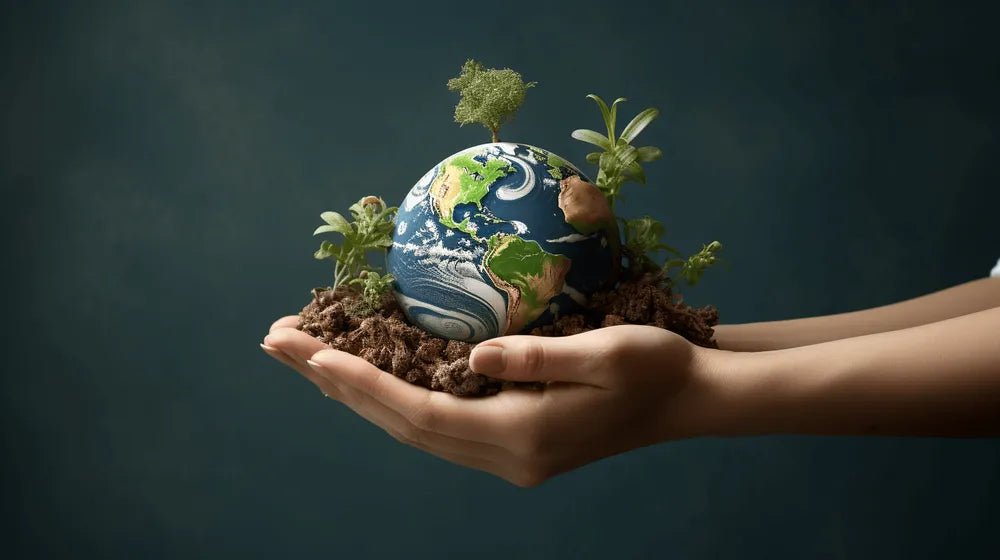What is the history behind celebrating the Earth Day?
Earth Day is celebrated on April 22 each year. It started in 1970 when people first realized how important it is to take care of our environment.
In January 1969, after a massive oil spill in Santa Barbara, Calif. a U.S Senator Gaylord Nelson, inspired by the anti-war movements against Vietnam War, created Earth Day to infuse that energy into public consciousness about air and water pollution.
The first Earth Day in 1970 marked the beginning of the modern environmental movement, inspired by the Rachel Carson's book, Silent Spring, which exposed the harmful effects of pesticides on nature.

What are the aims of Earth Day?
Earth Day aims to encourage global activism by raising awareness about environmental issues and promoting sustainability. Earth Day aims to mobilize individuals and communities to take action towards achieving environmental goals, including conservation, pollution reduction, renewable energy adoption, and biodiversity protection. It encourages people across the globe to actively participate in addressing environmental challenges and striving for positive change on a global scale.
What else we can do to celebrate Earth Day everyday?
"Everyday is Earth Day"
To celebrate Earth Day everyday, there are certain helpful habits we can add to our daily lives. Engaging in eco-friendly Earth Day activities like:
-Planting Trees
-Participating in community clean-ups
-Supporting local conservation efforts
Incorporating green living tips such as:
-Reducing energy consumption
-Conserving water
-Recycling
-Using eco-friendly products
-Minimize environmental footprint
Practising environmental stewardship by:
-Advocating for sustainable policies
-Supporting green initiatives
-Educating the community about energy conservation
Follow the 3 R's. Look for ways you can Reduce, Reuse and Recycle throughout your home. You'll save natural resources, energy and money, and you'll reduce waste sent to landfills.
These small steps can contribute to a healthier planet for future generations.
What is the difference between Earth Day and Earth Hour?
Earth Day and Earth Hour are events that raise awareness about the environment and sustainability. They have different focuses and ways of achieving their goals.
Earth Day is a day-long event that encourages people to act for the planet. Earth Hour is an hour-long event that focuses on energy conservation and switching off lights. Both events play a crucial role in educating people about the importance of protecting the Earth.
Earth Day is dedicated to raising awareness about environmental issues and advocating for positive change through various activities such as:
-Plant trees
-Clean-up campaigns
-Educational events
The platform promotes environmental education and motivates people and communities to protect the planet by taking action.
Earth Hour is an event organized by the World Wide Fund for Nature (WWF). People worldwide participate by turning off extra lights for one hour.
This usually happens from 8:30 pm to 9:30 pm. This gesture symbolizes their commitment to combating climate change and supporting sustainability. Earth Hour focuses more on energy usage and it's impact on climate change.
What did Earth Day achieve in 50 years?
In it's 50 years of existence, Earth Day has achieved significant milestones in advancing environmental awareness and action worldwide. One of the key accomplishment is the increased emphasis on climate literacy. Through initiatives like green school initiative, which promotes sustainability practices in educational institutions, Earth Day has helped integrate environmental education into school curricula and cultivate a new generation of environmentally conscious leaders.
Paris Agreement, is a global treaty. It aims to fight climate change. The goal is to keep global warming below 2 degrees Celsius.
Earth Day has grown in popularity over the past 50 years. More people worldwide are now aware of environmental issues. They are also acting to address these issues.
Earth Day inspires individuals and communities to work towards a more sustainable and resilient future for the planet. This includes promoting climate literacy and sustainability in schools and developing key international agreements like the Paris Agreement.




















Leave a comment
All comments are moderated before being published.
This site is protected by hCaptcha and the hCaptcha Privacy Policy and Terms of Service apply.